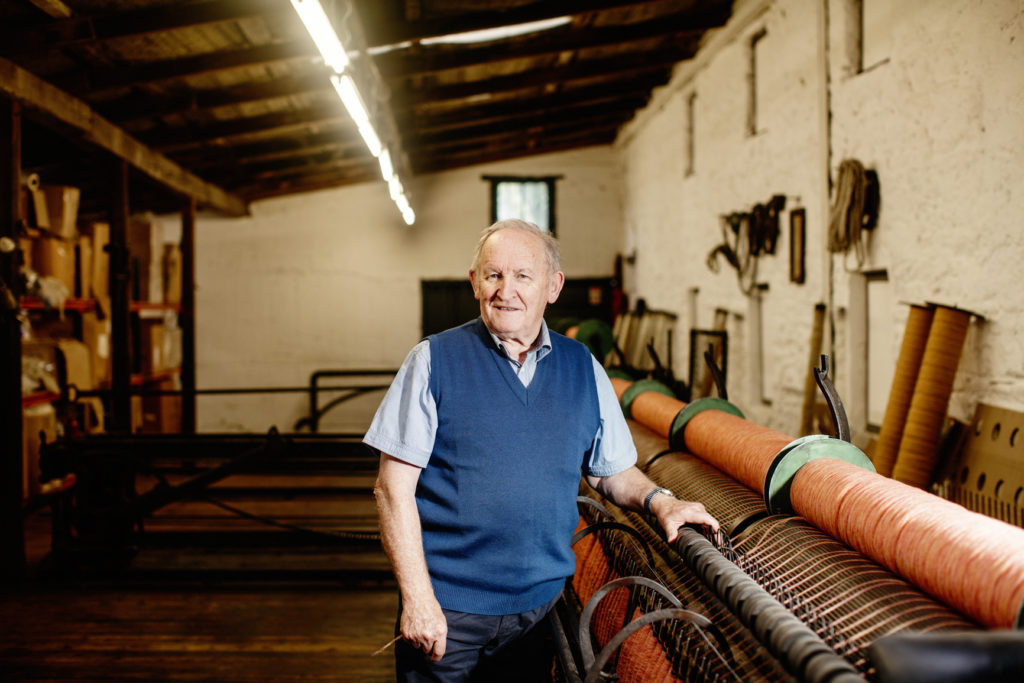A Co. Kilkenny based woollen mills that works with Galway fleece is increasing its number of partner farmers yearly as demand for its Irish wool textiles grows.
The 800 year-old Cushendale Woollen Mills, Graiguenamanagh, Co. Kilkenny, is one of only two remaining vertical woollen mills in this country retaining all stages of the textile manufacturing process under one roof, from Irish wool fleece to the final blanket. This includes design, colour, spinning, weaving and finishing the woven fabric.
“In Irish wool we only work with Galway fleece. We have worked with other fleece over the years but find the Galway’s characteristics most suitable for what we do,” said Miriam Cushen, the sixth generation of her family to be involved in the business and the first woman at the helm.
“We also work with merino lambswool and mohair. However, we import this as it is not available in Ireland. We purchase these yarns spun and undyed which we then traditionally hank dye which gives us a custom colour palette and adds to the handle and softness of the final textile,” Miriam said.

“We work directly with partner farmers for our Galway fleece. We firstly assess clippings for colour, softness, length and crimp. We also get to know the farmers,” she said.
“We want to work with farmers who look after the fleece and understand the importance of their role in supplying a clean quality fleece. This provenance and traceability allows us to ensure that the quality and value we overlay to this raw material enhances it to its best.
“The benefit and enjoyment for the farmer is they know exactly where their fleece is going and can see first hand their fleece turned into a beautiful textile. We are privileged to have wonderful relationships with some great farmers across the country.”
The fleece is traceable from farms in Galway, Roscommon, Mayo and Wexford. After the annual assessment of clippings, the fleece is brought to the historic mill where it is carefully brought through every stage of its journey from design to dyeing, carding, spinning, weaving and finishing.

“The promotion of this indigenous and indeed special Irish wool has been a core value of our family for six generations,” Miriam added.
“Here at Cushendale Woollen Mills we have the privilege of creating bespoke hand-crafted yarns and textiles from this wonderfully sustainable raw material.
“We know more and more discerning consumers are looking for a true authenticity behind brands and our deep-rooted story resonates hugely with them. During the Covid pandemic we reflected on this aspect of our business and undertook a revision of our own brand and expansion of our retail showroom,” she said.
Cushendale has remained dedicated to working with Irish wool and has sustained the heritage skills and processes to transform this fleece into premium Irish yarns and textiles that can be found in stores in this country and across the world.
The company’s innovation and provenance in Irish wool coupled with a rising global consciousness for sustainability and traceability, has resulted in an increasing demand for its Irish wool collections both nationally and internationally.

Philip Cushen, 5th generation and current owner, kept Cushendale on track through the decades that elsewhere saw so many looms fall silent, numerous weaving sheds fall empty and lots of well-known names disappear from the marketplace.
The recently opened showroom at the mill in Graiguenamanagh, with fit-out by master carpenter Eric Phillips, is the physical representation of the Cushendale vision.
Shoppers can browse the wide selection of Cushendale textiles against the backdrop of the historic site which gives the visitor a view into the mill. They can gaze back through a window into times past where a Victorian spinning mule from 1890 still transforms Galway fleece into yarn.
‘The retail experience resonates strongly with what today’s consumers are seeking out, directly connecting handcrafted pieces to the actual master craftsmanship behind it,” Miriam concluded.
